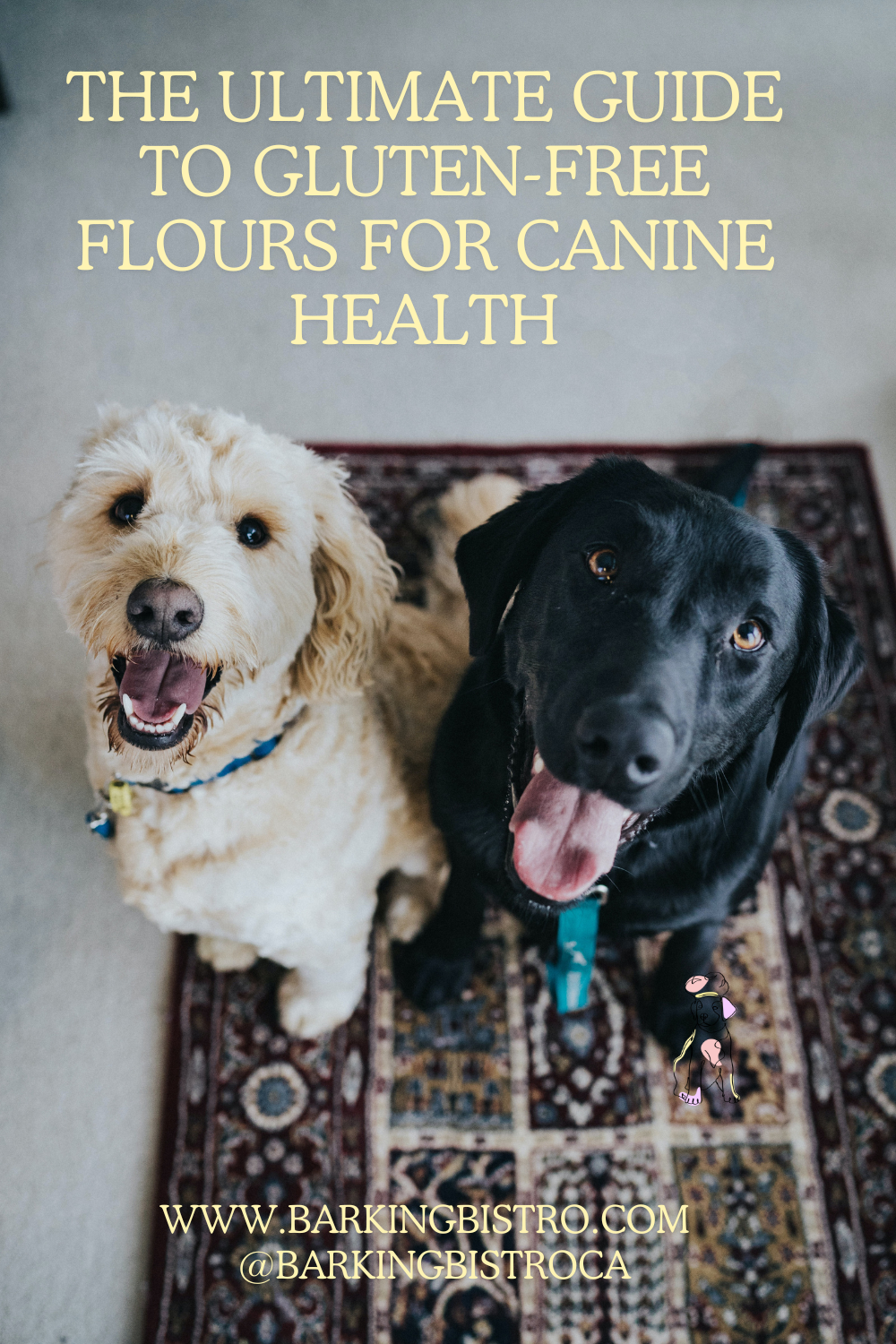As a dog owner, you want the best for your furry friend, including their diet. If your dog has been diagnosed with gluten sensitivity or you simply want to explore alternative options for their health, gluten-free flour can be a great addition to their meals. In this ultimate guide, we will delve into the world of gluten-free flours for canines, exploring their nutritional benefits and providing you with homemade and store-bought options to incorporate into your dog’s diet.
Why choose gluten-free flours for your dog’s health
Gluten, a protein found in wheat and other grains, can cause digestive issues and allergies in some dogs. You can help alleviate these potential health concerns by opting for gluten-free flour. Not only do gluten-free flours provide a safe alternative for dogs with sensitivities, but they also offer a range of nutritional benefits. These flours are often packed with vitamins, minerals, and fibre, promoting your canine companion’s healthy digestive system and overall well-being.
Common types of gluten-free flours for canines
Several types of gluten-free flour are suitable for dogs. One popular option is rice flour, which is easily digestible and gentle on the stomach. Another common choice is chickpea flour, which is high in protein and fibre. Buckwheat flour, made from the seed of a plant, is also a viable gluten-free option for dogs. Each of these flours brings unique nutritional benefits to your dog’s diet, ensuring they receive a well-rounded and balanced meal.
Nutritional benefits of gluten-free flours for dogs
Gluten-free flours offer a range of nutritional benefits for dogs. Rice flour, for example, is a good source of carbohydrates, providing your dog with energy for their daily activities. Chickpea flour is rich in protein, supporting muscle growth and maintenance. Buckwheat flour is high in fibre, aiding digestion and promoting a healthy gut. Incorporating these gluten-free flours into your dog’s diet ensures they receive the nutrients necessary for optimal health and vitality.
How to incorporate gluten-free flours into your dog’s diet
Introducing gluten-free flours into your dog’s diet can be a seamless process with a few simple steps. Start by gradually replacing a portion of your dog’s regular flour with the gluten-free alternative. Monitor your dog’s reaction and adjust the proportions as needed. It’s important to remember that each dog is unique, so what works for one may not work for another. Consulting with a veterinarian can help you determine the appropriate amount and frequency of gluten-free flour to incorporate into your dog’s meals.
Homemade gluten-free flour recipes for dogs
If you enjoy cooking for your dog, homemade gluten-free flour recipes are a fantastic way to provide them with nutritious and delicious meals. One recipe to try is gluten-free peanut butter and banana cookies. Mix together rice flour, mashed bananas, and peanut butter, then bake until golden brown. Another option is a chickpea flour-based pizza crust topped with dog-friendly ingredients like shredded chicken and vegetables. Experimenting with these homemade recipes allows you to cater to your dog’s specific taste preferences while ensuring they receive the health benefits of gluten-free flours.
Store-bought gluten-free flour options for canines
For those who prefer the convenience of store-bought options, numerous gluten-free flour options are available for canines. Look for reputable brands that prioritize quality ingredients and have a good reputation within the pet community. Some popular choices include rice flour, chickpea flour, and buckwheat flour. These can be easily found in pet supply stores or online retailers. Remember to read the labels and choose flours specifically labelled as gluten-free to ensure your dog’s highest level of safety.
Tips for successfully using gluten-free flours in dog treats and meals
When using gluten-free flour in your dog’s treats and meals, there are a few tips to keep in mind. Firstly, always follow recipes or consult a veterinarian to ensure you use the correct proportions and cooking times. Gluten-free flours can behave differently than traditional flours, so it’s important to have a solid understanding of their properties. Additionally, consider adding moisture to your recipes by including ingredients like applesauce or yogurt. This can help prevent dryness and make the treats more enjoyable for your dog. Lastly, store any homemade treats or meals in an airtight container to maintain freshness.
Potential allergens in gluten-free flours for dogs
While gluten-free flours are generally safe for dogs with gluten sensitivities, it’s important to be aware of potential allergens. Some dogs may have allergies to specific ingredients, such as rice or chickpeas. If you notice any adverse reactions after introducing a new flour into your dog’s diet, consult with a veterinarian to identify the potential allergen. They can help you navigate alternative options and ensure your dog’s health and well-being.
Conclusion: Making the switch to gluten-free flours for your dog’s health
In conclusion, incorporating gluten-free flour into your dog’s diet can have numerous health benefits. From aiding digestion to providing essential nutrients, these flours offer a safe and nutritious alternative for dogs with gluten sensitivities. Whether you experiment with homemade recipes or choose store-bought options, plenty of gluten-free flours are available to suit your dog’s needs. Remember to consult a veterinarian to ensure you make the best choices for your furry friend’s health. By making the switch to gluten-free flours, you can enhance your dog’s overall well-being and enjoy the peace of mind that comes with providing them with a nutritious diet.
Photo by Jasmin Chew on Unsplash

